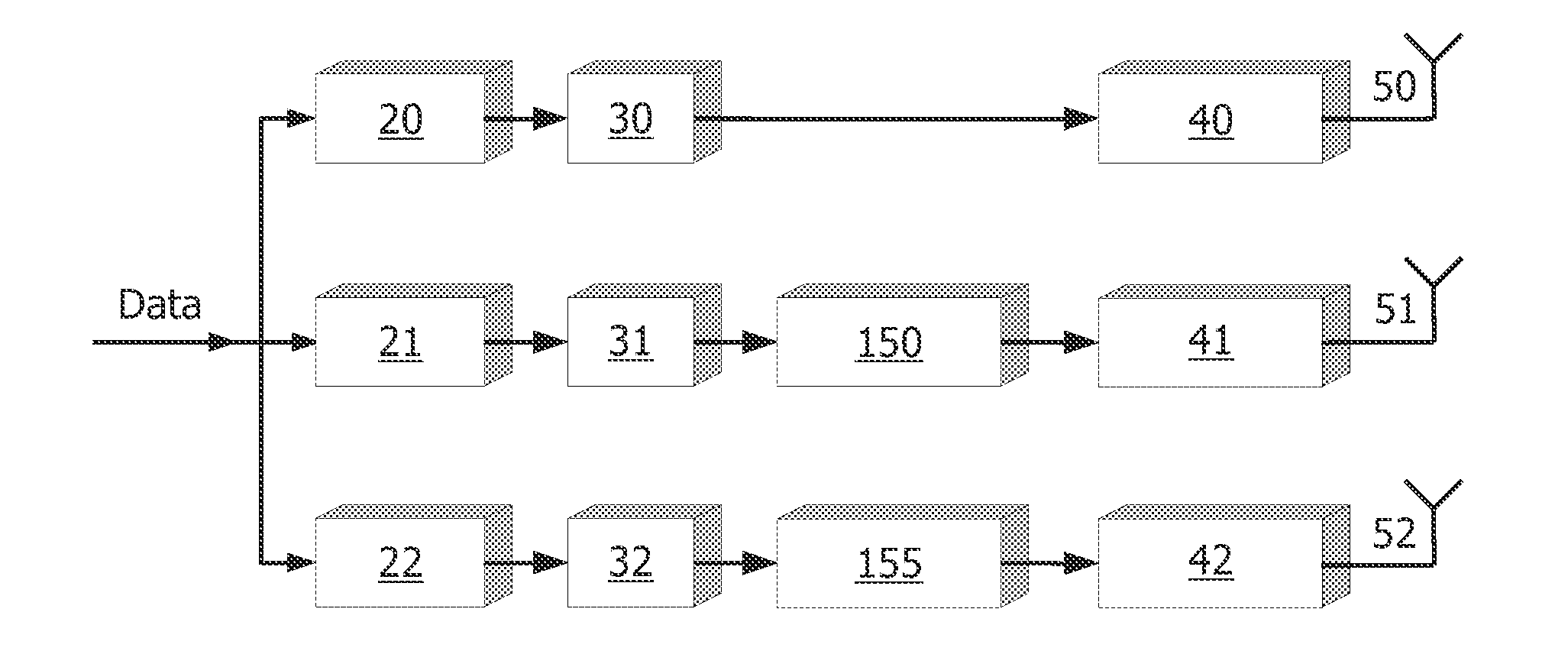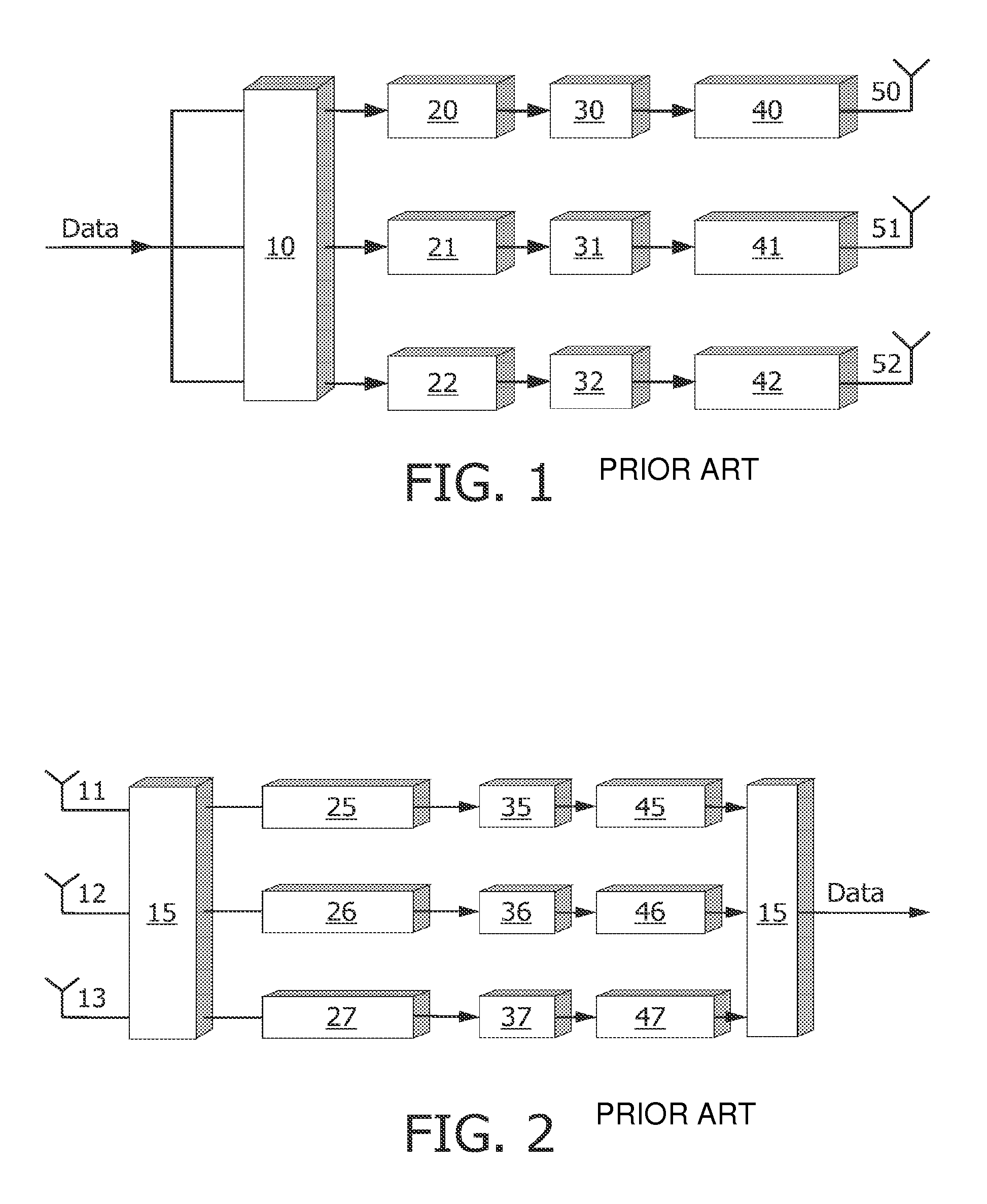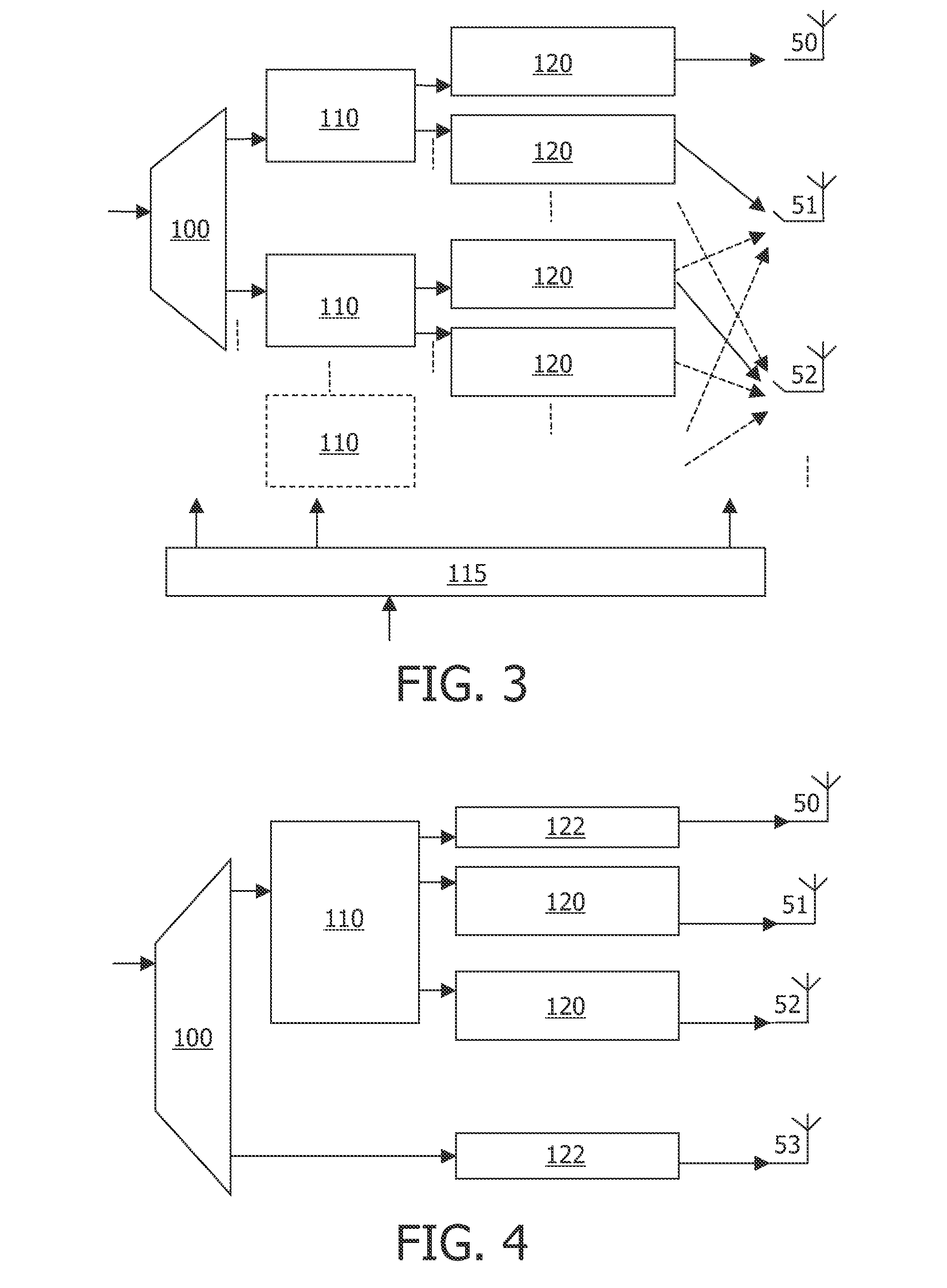Multiple antenna transmission with variable diversity gain
a multi-antenna and gain technology, applied in diversity/multi-antenna systems, polarisation/directional diversity, amplitude demodulation, etc., can solve problems such as inability to provide information at the transmitter
- Summary
- Abstract
- Description
- Claims
- Application Information
AI Technical Summary
Benefits of technology
Problems solved by technology
Method used
Image
Examples
Embodiment Construction
[0045]Some of the embodiments provide a MIMO spatial multiplexing wireless scheme in which different data is transmitted from each of a plurality of antennas at the same time and frequency and is adapted to enable also the same data to be transmitted from more than one antenna and, at the receiving equipment, is adapted to enable the same data received via different antennas to be combined diversity-style to produce an output data stream. Prior to transmission, decorrelation, such as scrambling, is applied to ensure that the same data transmitted from different antennas has uncorrelated bit values; this enables the MIMO receiver processing to operate substantially identically as for spatial multiplexing, and then de-scrambling is applied to recover the data. By uncorrelated, it is meant that the same data transmitted simultaneously from different antennas has bit values the majority of which are different for the different antennas.
[0046]The proportion of transmission capacity used ...
PUM
 Login to View More
Login to View More Abstract
Description
Claims
Application Information
 Login to View More
Login to View More - R&D
- Intellectual Property
- Life Sciences
- Materials
- Tech Scout
- Unparalleled Data Quality
- Higher Quality Content
- 60% Fewer Hallucinations
Browse by: Latest US Patents, China's latest patents, Technical Efficacy Thesaurus, Application Domain, Technology Topic, Popular Technical Reports.
© 2025 PatSnap. All rights reserved.Legal|Privacy policy|Modern Slavery Act Transparency Statement|Sitemap|About US| Contact US: help@patsnap.com



